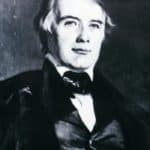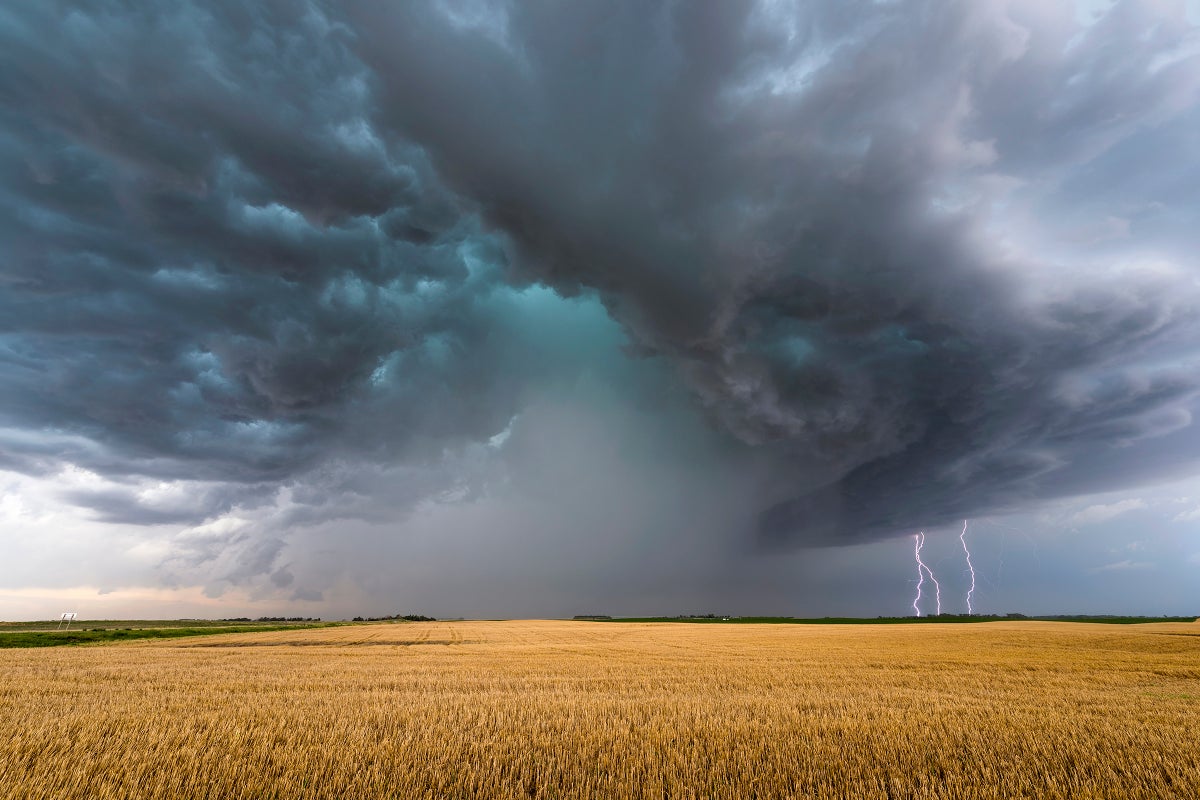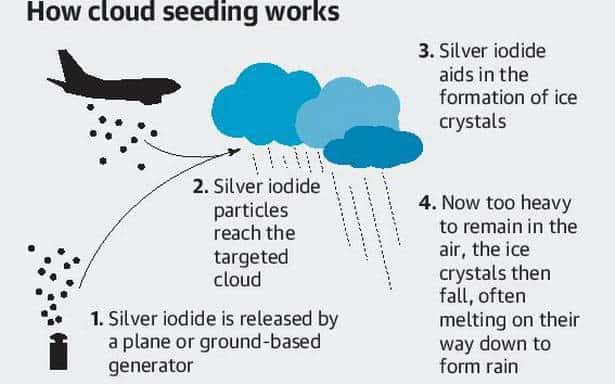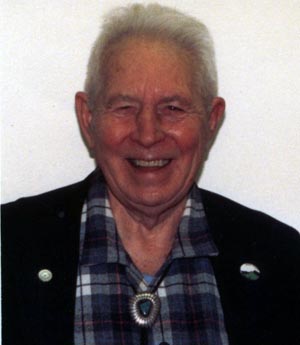The History of trying to manipulate the weather has been around from the beginning of time. In earlier times, in America, when superstition ruled in matters of the unknown, Man used magic in his efforts to create rain. Today Stories of our Government manipulating the weather are speculated by pretty convincing dudes with lots of evidence. But Can The Government Make it Rain?
Yes, the government attempts rainmaking by cloud seeding & weather modification:
- Cloud seeding-silver iodide
- Dry ice-ice crystals
- Liquid Propane
- Salt particles-cloud droplets
- Hygroscopic flares
- Aerosols-altering cloud properties
- Results vary due to atmospheric conditions
- Long-term impacts & concerns persist
In the early era of the Old West, the leaders of towns sent notices out for someone from anywhere over the country who knew how to bring rain and relief to the draught-laden farms of Western Plains. A “Rainmaker” could make 500 dollars for a good rain. First, most people believed that Indians held the secret because of their closeness to the natural events of the earth.
Can the Government Make It Rain
The idea of “making it rain” typically refers to inducing precipitation, such as rainfall, artificially. While there have been various attempts to influence weather patterns through methods like cloud seeding, where certain substances are dispersed into the air to encourage cloud formation and precipitation, the effectiveness of such efforts is debated, and they often yield unpredictable results.
Governments and private entities have conducted cloud seeding experiments for decades in attempts to increase rainfall in drought-affected areas or to mitigate the impact of hailstorms, among other purposes. However, the success of these efforts can be limited by factors such as atmospheric conditions, the availability of suitable clouds, and the overall complexity of weather systems.
In summary, while there are methods like cloud seeding that aim to influence precipitation, the ability to reliably “make it rain” on demand remains a challenging endeavor, subject to various uncertainties and limitations.
How Seeding Works: The Science Behind Man-Made Rain
They used a Rainstick historically that has been utilized by the American Indian people living in dry, desert climates across the West. Often employed in religious ceremonies, the purpose was to draw life-sustaining hydration from the heavens. The Rain Stick mimicked the soft splash of raindrops to remind the “spirits” or “Great Spirit” that the people of Earth have a need for a drenching rain for their crops, animals, and thirst because the water is sacred.

 The Indians practiced an assortment of rainmaking rituals. They smoked special pipes and burned tobacco by the stack. and shot arrows at them, perhaps to spear the rain out of them. The Indians prayed, danced, and chanted. The Choctaws hung a fish around a tribesman’s neck and stood him in the nearest stream until either it rained or somebody in authority came up with a good explanation of why it didn’t.
The Indians practiced an assortment of rainmaking rituals. They smoked special pipes and burned tobacco by the stack. and shot arrows at them, perhaps to spear the rain out of them. The Indians prayed, danced, and chanted. The Choctaws hung a fish around a tribesman’s neck and stood him in the nearest stream until either it rained or somebody in authority came up with a good explanation of why it didn’t.
James Pollard Espy (or “The Storm King”) (May 9, 1785 – January 24, 1860) was a U.S. meteorologist who proposed burning forests to increase rainfall. Espy developed a convection theory of storms, explaining it in 1836 before the American Philosophical Society and in 1840 before the French Académie des Sciences and the British Royal Society.
His theory was published in 1840 as The Philosophy of Storms. He became a meteorologist for the War (1842) and Navy (1848) departments and developed the use of the telegraph in assembling weather observation data by which he studied the progress of storms and laid the basis for scientific weather forecasting.
Charles Mallory Hatfield developed his methods for producing rain. By 1902 he had created a secret mixture of 23 chemicals in large galvanized evaporating tanks that, he claimed, attracted rain. Hatfield called himself a “moisture accelerator” The city of San Diego, suffering badly from drought, made a deal with Hatfield to make it rain.
He agreed and made it rain so hard that there was a flash flood, causing millions of dollars in damages. As a result, Hatfield was not paid, as this would imply fault on the part of the city. Ironically, this story is a microcosm of the weather modification industry.
The Rainmaker (1956) During the Great Depression, a drought is wreaking havoc on a small, destitute Kansas town. Bill Starbuck (Burt Lancaster), a slick grifter, arrives in town, promising he can make it rain in exchange for $100.
Vincent Schaefer (1906–1993) discovered the principle of cloud seeding in July 1946 through a series of serendipitous events. Following ideas generated between himself and Nobel laureate Irving Langmuir while climbing Mt. Washington in New Hampshire, Schaefer, Langmuir’s research associate,
created a way of experimenting with supercooled clouds using a deep freeze unit of potential agents to stimulate ice crystal growth, i.e., salt, talcum powder, soils, dust and various chemical agents with minor effect. Then one hot and humid July 14, 1946, he wanted to try a few experiments at General Electric’s Schenectady Research Lab.
He was dismayed to find that the deep freezer was not cold enough to produce a “cloud” using breath air. He decided to move the process along by adding a chunk of dry ice just to lower the temperature of his experimental chamber.
To his astonishment, as soon as he breathed into the deep freezer, a bluish haze was noted, followed by an eye-popping display of millions of microscopic ice crystals, reflecting the strong light rays from the lamp illuminating a cross-section of the chamber.
He instantly realized that he had discovered a way to change supercooled water into ice crystals. The experiment was easily replicated, and he explored the temperature gradient to establish the −40˚C limit for liquid water.
Cloud seeding is also used to reduce hail damage and eliminate fog from around the vicinities of airports. This well-established technology has been in use since the 1940s in dozens of countries around the world but Climate Change has been causing draught making problems critically worse. Especially in arid regions like the Southwest areas of the U.S.
Then, aircraft disperse salts using flares or explosives in the lower portions of clouds. The salts grow in size as water joins with them, and this leads to rain. Together silver iodide, which is close in molecular structure to ice or salt, joins with the water droplet and eventually gets heavier and falls as precipitation. Depending on the temperature, what kind of precipitation will be produced?
Most scientists agree that this process works, and it is also fairly inexpensive. There are been many countries all over the world that are affected by Climate Change that use the same procedure.
Private companies are usually hired to perform the seeding under the direction of a meteorologist and local and federal government authorities. The benefits are widely accepted and as much as 10% greater than average because of the higher dryer temperatures brought on by changing climates throughout the world.
The latest data from the World Meteorological Organization listed 74 projects ongoing in 23 countries worldwide. In 2001 the National Oceanic and Atmospheric Administration (NOAA) documented 66 projects conducted in the western U.S. Project objectives included fog dispersal, snowpack, rainfall enhancement, and hail suppression.
What Is Cloud Seeding: Unveiling Weather Manipulation Techniques

Cloud seeding, to leave on an historical trip through the realms of weather modification, one must grasp the techniques tucked beneath the veil of cloud seeding. It’s an august pursuit, employing science to beckon the clouds to release their precious cargo: rain.
The concept isn’t as arcane as it might seem; in fact, it’s a method often enlisted by governments seeking to produce rainfall in areas parched by drought. Seeding clouds isn’t merely a shot in the dark; it’s a carefully studied process that enhances a cloud’s ability to precipitate.
Seeding clouds involves the ascent into the firmament, where substances are introduced into the atmosphere to encourage water droplets within clouds to coalesce and cascade earthward as precipitation. To seed a cloud, an array of substances such as silver iodide or other particulates is dispatched aloft, prompting the water vapor to crystallize.
These particulates act as nuclei around which moisture coalesces, leading to droplet formation heavy enough to fall to the ground. Imagine the skies filled with seeded clouds blossoming into gentle rains that quench the thirst of the land below.
The act of seeding isn’t purely the stuff of rainbows and butterflies; it’s a strategic venture, a form of weather manipulation tapping into human ingenuity to tinker with the atmosphere’s elements. Its efficacy sparked spirited dialogue, planting seeds of both wonder and skeptical inquiry among scientists and the general populace alike. While some regions hail cloud seeding as a bountiful boon, others question its impacts on ecosystems and weather patterns. When clouds become objects of seeding repeatedly, discussions pivot to the environmental footprint of such weather modification tactics.
Weather modification, through measures like seeding, strays into contentious territory, as altering one region’s climate could unwittingly play havoc elsewhere, unleashing unforeseen repercussions. To seed the clouds judiciously, it’s imperative to consider the interconnected dance of global weather systems. Threading the needle between benefit and potential backlash, cloud seeding remains a weather manipulation tool of profound promise and probing scrutiny.
The repetition of cloud seeding efforts gives rise to a better grasp of its impact on weather modification. With technology advancing, the clouds may soon be seeded with refined precision, ushering in a new era where the skies’ parched pages are inscribed with our rainmaking tales. Whether seeding the clouds will continuously serve as a viable weather modification mechanism remains under a microscope; nonetheless, the dream of taming the heavens to alleviate earthly woes continues to flutter in the clouds.
Does the Government Use Cloud Seeding Against Climate Change
In the quest to conquer the skies and make it rain, governments worldwide have turned to a method known as cloud seeding. The notion that humans can make the skies burst forth with rainfall might seem like an audacious assumption, but when the seeding works, the results can be profound. It’s the silver iodide and other particulate matter that, when introduced into the clouds, become the catalysts for artificially induced rainfall. So, could we assert that we can make rain? Well, the practice of seeding the clouds to create rain has been asserted by science as a plausible measure to increase rainfall.
 Cloud seeding operates on the principle that with the right ingredients, we can coax the atmosphere into making it rain. The technique requires an understanding of meteorology and the delicate equilibrium inherent in our climate systems.
Cloud seeding operates on the principle that with the right ingredients, we can coax the atmosphere into making it rain. The technique requires an understanding of meteorology and the delicate equilibrium inherent in our climate systems.
The premise is that by dispersing substances such as silver iodide into clouds, we can trigger the condensation necessary for rainfall. Silver iodide acts as a nucleus around which water vapor can condense, leading to precipitation. It is, in essence, a form of weather modification that aims to mimic nature’s processes.
Many are skeptical, asking, “Can the government regulate weather to such an extent?” The truth is, while we can’t control weather entirely, skilled meteorologists believe we can influence it to a certain degree. Using aircraft or ground-based generators, particulates like silver iodide are carefully released into the atmosphere where they can work their magic.
It’s not just a splash of silver in the sky though; meticulous planning is required to ensure that conditions are apt for seeding to be effective, which means enough moisture and the right kind of clouds must be present.
The potential of cloud seeding has been entertained for decades, but now more than ever, it’s being explored as a serious solution to droughts and water scarcity. If seeding works, it could certainly be a game-changer. Existing in the domain of ‘could’ for years, cloud seeding is steadily moving into the ‘can’ category, as more regions report success in inducing rain. Could we be on the cusp of being able to routinely make rain where it’s needed? The answer isn’t as clear as we’d like it to be but is inclined more towards ‘can’ than ever before.
While the process is complex, the question persists: can we truly make rain? The science behind cloud seeding shows it’s not just a possibility; it’s a reality in some parts of the world. However, skeptics will always question if the rainfall can be attributed to seeding or if it was a coincidental natural occurrence. Can we assert that seeding makes rain? When backed by empirical evidence, the claim holds more water.
Cloud Generator
Conclusion:
Can a Government make it rain? well, maybe, I would say yes, and hopefully, our Governments and governments all over the world are working on a solution to end famine and draught here on earth. I think through exciting new technology, we are close to doing it. It seems the older process of Seeding Clouds is the simplest, most cost-effective, and closest we’ve come to becoming The Rainmakers. Governments and Private Companies can make it rain by adding tiny particles called ice nuclei along with silver iodide to clouds that are initially identified and are apt to produce precipitation with the help of Cloud seeding.

*References–
*CO River District Looks To Cloud Seeding To Boost Water Supply
*Geoengineering Watch Articles
FAQ’s
- Is cloud seeding safe for the environment? Cloud seeding is generally considered safe, but concerns exist about its long-term environmental impacts and potential unintended consequences.
- Who conducts cloud seeding operations? Cloud seeding operations are often conducted by government agencies, private companies, or research institutions interested in weather modification.
- Where is cloud seeding practiced? Cloud seeding is practiced in various regions around the world, particularly in areas prone to drought or water scarcity.
- Can cloud seeding be used to prevent hailstorms? Yes, cloud seeding can sometimes be used to mitigate the impact of hailstorms by influencing the formation of hailstones within clouds.
- Are there regulations governing cloud seeding? Regulations governing cloud seeding vary by country and jurisdiction, with some regions having specific guidelines or permits required for conducting seeding operations.
- What are the limitations of cloud seeding? Limitations of cloud seeding include its dependence on specific atmospheric conditions, unpredictable outcomes, and potential ethical concerns regarding weather modification.

